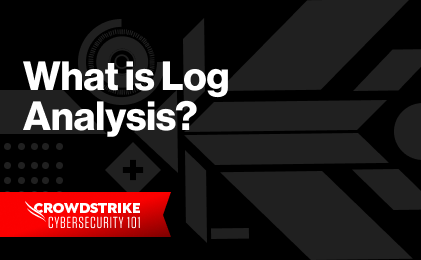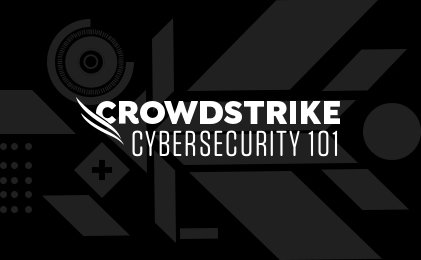In modern DevOps, observability and monitoring are two terms often mentioned and sometimes used interchangeably. In many cases, they may seem to be similar concepts, with a blurry line separating them. However, there are clear distinctions between the two.
Monitoring refers to the practice undertaken by engineering or operations teams to monitor and comprehend the current state of their systems. It’s dependent on collecting predefined metrics and has a long history that goes back almost as far as computing itself.
Observability is a much more recent concept. Although it’s a bit trickier to define, there’s a clear objective associated with it. It’s not just an empty DevOps buzzword.
In this post, you will learn what these two terms mean and how they relate with one another. We’ll also take a closer look at some of the tools available for implementing observability and monitoring.
Let’s start by diving deeper into our definition of monitoring.
What is Monitoring?
The purpose of monitoring is to promote effective communication. In modern IT, monitoring tells the DevOps or Site Reliability Engineering (SRE) teams how well an observable system is doing its job.
Before implementing a monitoring process, you need to define the metrics you want to monitor. From there, you can collect that set of predefined metrics (and, potentially, logs) from the relevant monitored systems. Then, you’ll need to aggregate the data, determine and highlight trends, and call out any disruptions, problems or other errors.
What problems might cause a warning from your monitoring tools? There are multiple possibilities, but here are some examples:
- Network latency
- Poor application response time
- Decreased I/O performance
- Failed database operations
Modern web applications use two types of monitoring: synthetic and real user monitoring (RUM). Synthetic monitoring is generally used to monitor short-term trends, while RUM is better suited for long-term ones. Synthetic monitoring uses automation tools to measure a system’s functionality. For example, it will use sample values to decide if a web application is performing as expected. RUM involves recording the user’s actual interaction with the application and finding out if the application is performing or functioning as expected.
Monitoring isn’t a new practice or concept. It has always been a part of the modern computing landscape, going back as far as the dawn of the personal computing era. One early example of monitoring was Norton Disk Doctor. The program would scan PC disk drives and report on problems it found.
In today’s DevOps environment, SRE teams use monitoring to check the overall health of individual servers, networks, and data storage. Monitoring functions as a subset of an environment’s overall observability goals.
What Is Observability?
According to Wikipedia, “observability is the measure of how well internal states of a system can be inferred from knowledge of its external outputs.”
Think of it in terms of a patient receiving routine medical care after experiencing a nagging pain. From an IT perspective, the goal of observability is to analyze external outputs—like symptoms—that provide windows into how the system is functioning internally. Observability examines effects and then correlates that to a specific cause.
Why has observability become such a hot concept in the IT world? Since 2005, cloud computing—and the use of distributed apps—has exploded in popularity. Gone are the days when one could monitor a single cluster of VMs and call it a day. In the modern IT world, an app might span multiple clouds, using containers and microservices. These services may be both distributed and multi-layered.
This is the key difference between the need for simple monitoring versus observability. Having a multi-tiered environment requires a holistic view of the overall infrastructure—a view that only observability can provide.
The objective of observability is to deliver a comprehensive view of infrastructure, more than what individual system monitoring can provide. It helps to determine the root cause of a problem with much more certainty, particularly in a distributed, complex system.
An observable system’s external outputs include metrics, events, traces and logs. Some examples of how DevOps engineers can take advantage of observability include:
- Security anomaly detection
- Cost analysis of cloud resources
- Call trace analysis to determine how specific input values are impacting program failure
- Identification of seasonal spikes in system load and tying that back to a suboptimal load balancer
Most observability platforms provide the detailed information a user needs to easily identify the root cause of a problem. Some can also suggest fixes to the problem. A few platforms even take it a step further by performing the corrective measures themselves.
Why Do Observability and Monitoring Seem Similar?
So, what leads to the confusion between observability and monitoring? For one, the terms themselves are similar, and both have similar end goals. They both try to improve system reliability and identify the cause of a problem to improve overall performance.
They also rely on the same data. Whether you’re looking to create an observable or monitored system, you need to first capture the right outputs. This requires installing collectors and agents, and possibly instrumenting application code.
The two tasks can also coexist. As previously mentioned, monitoring is a subset of observability. In fact, many observability platforms have monitoring tools baked into their interface. That means you don’t need two separate sets of tools to handle both monitoring and observation—it’s all included together.
The Difference Between Observability and Monitoring
Despite all that they share, there are several critical distinctions between observability and monitoring. For one, monitoring is more of an operational function. It examines a system’s internal performance and reports on issues. Monitoring doesn’t report on the multiple factors that could be causing a problem. It can only alert the DevOps team about the existence of a problem.
For example, monitoring can warn your SRE teams about an unresponsive server. It can provide data on the system’s memory, network performance and CPU metrics—but not what caused those spikes. An observability platform, however, goes a step further. It examines server logs, traces, events and metrics, and then it correlates the data, perhaps determining that a runaway process is leading to a spike in CPU usage. The observability platform then reports on that process.
Monitoring tells you that something is wrong. Observability uses data collection to tell you what is wrong and why it happened.
Whereas monitoring collects metrics, DevOps teams still must manually analyze the information, correlate it to the problem, and locate the error. Observability automates these cumbersome tasks, making it much easier for the team trying to locate and fix a problem.
Observability comes with advanced functions like data correlation, sometimes using AI to support contextual indication, distributed tracing and advanced anomaly detection.
Another key difference is that observability can highlight “unknown unknowns.” These are problems that the DevOps team might not even have been aware of, whereas monitoring focuses more on finding a system’s status.
Learn More
In this article, we’ll explore logging and monitoring processes, looking at why they’re important for managing applications. We’ll also cover best practices to integrate logging with monitoring to obtain robust visibility and accessibility over an entire application. Logging vs Monitoring
How Observability and Monitoring Can Work Together
While the two functions are different and serve different purposes, this isn’t an “either/or” discussion. They can—and should—coexist, complementing each other for a more robust problem-solving experience.
Monitoring can capture and report on small, known problems. It can highlight these issues via alerts, giving SRE teams the basic information they need to address them before they escalate in severity.
Monitoring can also help confirm planned changes to a system. Imagine a scenario where a server runs out of disk space. Monitoring can highlight that. The DevOps team can implement planned changes to add extra disk space, which should stop the monitoring system’s alerts. In this case, the fix can be considered complete without the need for more complex observation.
However, what happens when there are repeated incidents of the same problem without a clear root cause? That may call for observation and a deeper level of analysis, an area where monitoring falls short. An observability tool can identify one—or potentially several—root causes. Once this is complete, DevOps engineers can reconfigure the monitoring tool for an additional set of metrics, send additional alerts or even ignore specific alarm conditions.
Observability is great for assisting with operations such as capacity planning, cost optimization, patching, upgrades, or developing fixes. Monitoring may not be able to do these same tasks, but they can confirm if the results of the actions are successful.
Discover the world’s leading AI-native platform for next-gen SIEM and log management
Elevate your cybersecurity with the CrowdStrike Falcon® platform, the premier AI-native platform for SIEM and log management. Experience security logging at a petabyte scale, choosing between cloud-native or self-hosted deployment options. Log your data with a powerful, index-free architecture, without bottlenecks, allowing threat hunting with over 1 PB of data ingestion per day. Ensure real-time search capabilities to outpace adversaries, achieving sub-second latency for complex queries. Benefit from 360-degree visibility, consolidating data to break down silos and enabling security, IT, and DevOps teams to hunt threats, monitor performance, and ensure compliance seamlessly across 3 billion events in less than 1 second.

